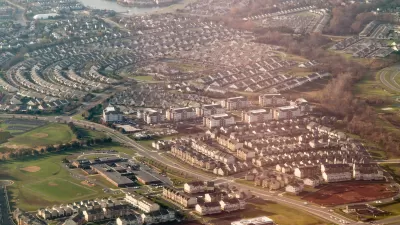As the global recession continues to hit the global economy, shopping centers take on two distinct development patterns in developed and developing nations.
An often-wild and volatile indicator of economic prosperity is consumer spending. As the global recession hit, shopping centers, and especially their developers, hit hard times financially, struggling as spending and consumer confidence plummeted. Yet, development continues to take place, in both developed and developing nations.
While shopping center construction in "mature markets" like Western Europe and the United States continues to drop, as Retail Traffic Magazine's Beth Mattson-Teig reports, "[d]evelopers are adopting more aggressive strategies in order to compete in emerging markets where shopping center construction is flourishing. Development is very active in emerging markets such as China, India, Indonesia, Turkey, Saudi Arabia and Latin America."
But what does that mean for "mature markets"? Though construction has been limited, construction has been, according to Mattson-Teig, "on the redevelopment, repositioning or expansion of existing centers. Across Western Europe, expansions of existing centers account for 30 percent of the pipeline for 2012 and 2013." In the U.K., that number increases to 45 percent.
So, while shopping center construction remains a boon in developing nations, "[d]evelopers are focusing on infill locations in top markets with strong market demographics and traffic counts."
FULL STORY: Developers Adapt Strategies to Fit Dynamics of Mature and Emerging Markets

Alabama: Trump Terminates Settlements for Black Communities Harmed By Raw Sewage
Trump deemed the landmark civil rights agreement “illegal DEI and environmental justice policy.”

Study: Maui’s Plan to Convert Vacation Rentals to Long-Term Housing Could Cause Nearly $1 Billion Economic Loss
The plan would reduce visitor accommodation by 25% resulting in 1,900 jobs lost.

Why Should We Subsidize Public Transportation?
Many public transit agencies face financial stress due to rising costs, declining fare revenue, and declining subsidies. Transit advocates must provide a strong business case for increasing public transit funding.

Paris Bike Boom Leads to Steep Drop in Air Pollution
The French city’s air quality has improved dramatically in the past 20 years, coinciding with a growth in cycling.

Why Housing Costs More to Build in California Than in Texas
Hard costs like labor and materials combined with ‘soft’ costs such as permitting make building in the San Francisco Bay Area almost three times as costly as in Texas cities.

San Diego County Sees a Rise in Urban Coyotes
San Diego County experiences a rise in urban coyotes, as sightings become prevalent throughout its urban neighbourhoods and surrounding areas.
Urban Design for Planners 1: Software Tools
This six-course series explores essential urban design concepts using open source software and equips planners with the tools they need to participate fully in the urban design process.
Planning for Universal Design
Learn the tools for implementing Universal Design in planning regulations.
Smith Gee Studio
Alamo Area Metropolitan Planning Organization
City of Santa Clarita
Institute for Housing and Urban Development Studies (IHS)
City of Grandview
Harvard GSD Executive Education
Toledo-Lucas County Plan Commissions
Salt Lake City
NYU Wagner Graduate School of Public Service




























